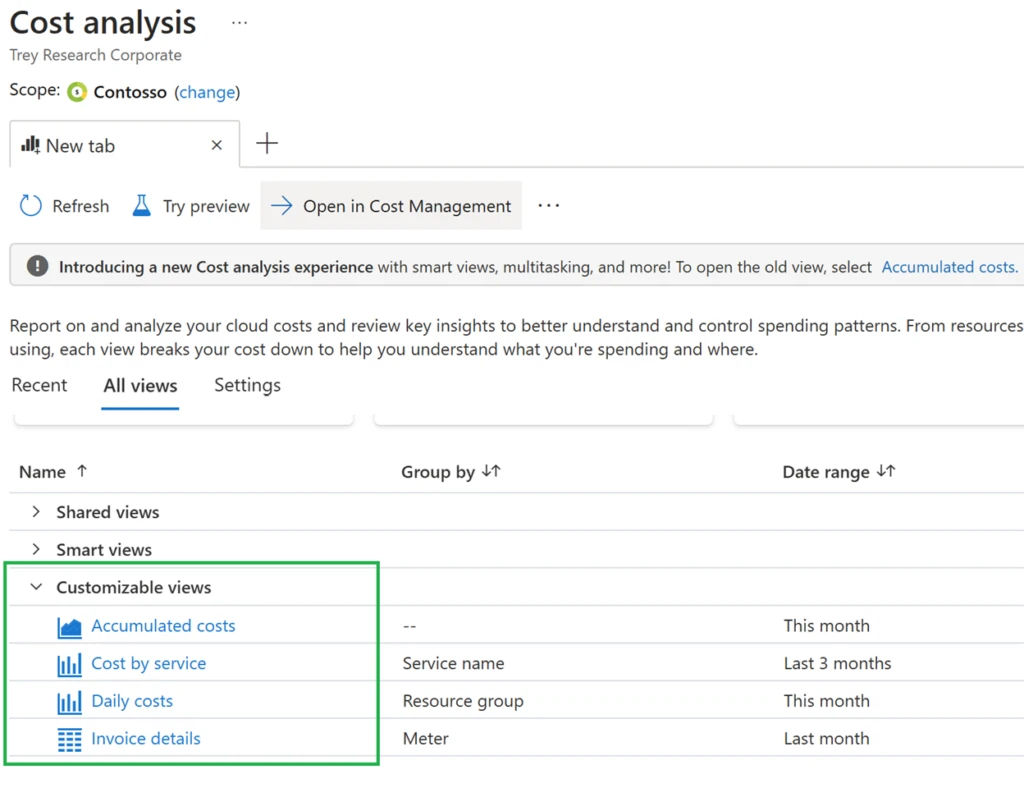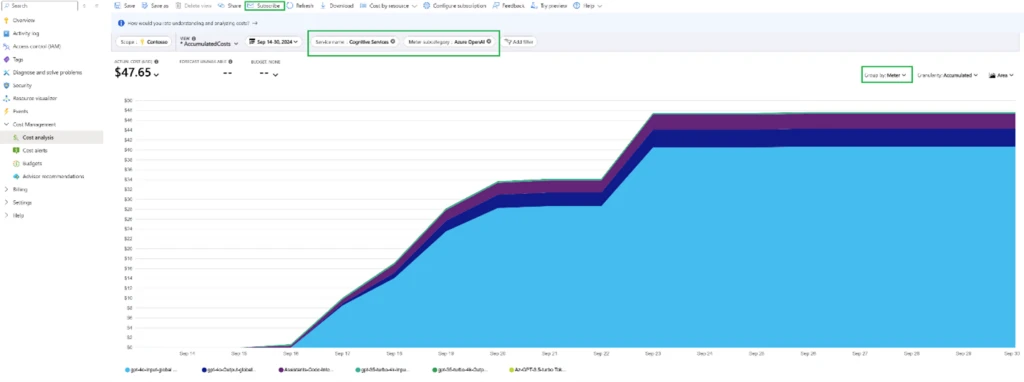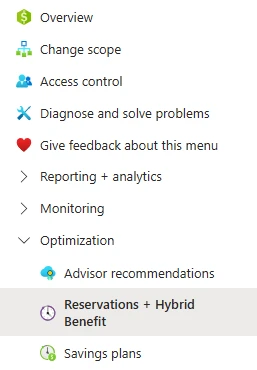We’re always looking for ways to learn more about your challenges and how Microsoft Cost Management can help you better understand where you’re driving costs in the cloud, identify and prevent bad spending patterns, and optimize costs so you can do more with less.
Whether you’re a new student, a thriving startup, or the largest enterprise, you have financial constraints and need to know what you’re spending, where it’s being spent, and how to plan for the future. No one wants surprises when it comes to their bill, and that’s where Microsoft Cost Management comes in.
We’re always looking for ways to learn more about your challenges and how Microsoft Cost Management can help you better understand where you’re driving costs in the cloud, identify and prevent bad spending patterns, and optimize costs so you can do more with less. Here are some updates you may find useful:
Cost of Azure OpenAI service
As AI adoption accelerates across industries, organizations are increasingly integrating these technologies into their core operations. With increasing reliance on AI, it has become critical for our customers to manage their AI spend. (FinOps for AI). IN In our last blog, I wrote about the hourly pricing for Azure OpenAI throughput units (PTUs) and the introduction of 1-month and 1-year reservations powered by Azure OpenAI.. Here I will cover the tools we offer you in cost management to analyze, monitor and optimize your Azure OpenAI costs. Please note that the tools below can also be used for other Azure services.
Analyze costs
We know that cost analysis is your favorite tool for gaining insight into your costs. Customizable views within cost analysis allow you to group and filter by multiple cost attributes. You can view costs grouped by brands, resource groups, locations, and more, and use filters to target the attribute you want. The screenshot below shows the customizable views in cost analysis.

The good news is that you can use these existing views, which most of you are already familiar with, to analyze Azure OpenAI costs as well, using the filters below:
Service Name = Cognitive Services.
Service Tier/Meter Subcategory = “Azure Open AI” or “Azure Open AI Reservation”
You can also use the “Resource Type = OpenAI” filter, but the display would not include reservation purchases. The screenshot below shows the “Accumulated Cost” view in Cost Analysis using the filters listed above and grouped by meter. Grouping by meters allows you to view input/output costs for your various models for token-based deployments and PTU costs for PTU-based deployments for the selected range.

Track costs:
There are several ways to track Azure OpenAI costs to ensure they don’t spiral out of control and stay within allocated budgets. Here I will discuss two available approaches in cost management.
Scheduled emails:
Getting email updates on your expenses is a great way to stay on top of them and analyze trends and anomalies. You can sign up for automatic emails for your private or shared views in Cost Analysis using the “Subscribe” button at the top of the view you want (as seen in the screenshot above) or through the Scheduled Actions API. You can also add members of your team to receive these emails daily, weekly or monthly.
Budgets:
If you don’t want to be surprised by your costs and want your teams to be accountable for their spending, you need to create budgets. With budgets, you’ll receive alerts when actual or projected costs exceed a threshold you define. Use the filters above to create a budget for Azure OpenAI costs. Budgets also support calling action groups when a threshold is reached, allowing you to perform automated actions such as calling webhooks, creating tickets, and sending push notifications to the Azure mobile app so you never miss an alert! Setting up budgets is really easy and can save you a lot of trouble explaining cost overruns. You can read more about budgeting in our documentation, which covers both cost analysis and API experiences.
If you prefer a video tutorial, learn how to create Azure Budgets.
Optimize costs
Your journey to cost optimization begins with identifying the right pricing model for your Azure OpenAI deployment. You have two models to choose from, provisioned throughput units (PTUs) and standard token-based deployments. You can use the price calculator to estimate the cost of these models based on your anticipated usage. For PTU deployment, provisioned Azure Open AI Service reservations can help you save significant costs. You have the option to go with a 1 month or 1 year commitment. While purchasing reservations to optimize costs is the first step in the right direction, it is equally important for you to monitor the utilization of those reservations to avoid waste. In expense management, you can use the “Reservation + Hybrid Advantage” sheet to track the utilization of all your reservations. As seen in the screenshot below, it can be found under Optimization in the left-hand menu under Cost Management.

You can also create booking usage alerts to be proactively notified when usage is below your configured threshold to maximize your benefits.
We hope you can use all these tools to manage your Azure OpenAI Service spend, and as I mentioned above, they are applicable to all Azure services.
New ways to save money in the Microsoft cloud
Here are some of the new and updated offers you may be interested in:
Documentation update
Here are some documentation updates you might be interested in this month:
New: Save on select Linux VMs for a limited time
New: Discover the most frequently asked questions about Microsoft’s cloud footprint
New: Management of the Microsoft Azure Consumption Commitment resource within a subscription
Update: Save costs with Microsoft Azure OpenAI Service Provisioned Reservations
Update: Azure Product Transfer Center
Update: Change contact information for Azure billing account
Update: Eligibility to purchase Azure Savings Plan
Do you want to keep track of all documentation updates? See the change history in the cost management and invoicing documentation in azure-docs repository on GitHub. If something is missing, select it Edit at the top of the document and submit a quick download request. You can also submit an issue on GitHub. All contributions are welcome and appreciated!
what’s next
These are just some of the big updates from last month. Don’t forget to check out previous updates to Microsoft Cost Management. We’re always listening and always improving based on your feedback, so please keep the feedback coming.
Follow @MSCostMgmt on Twitter and subscribe to the YouTube channel for updates, tips and tricks. You can also share ideas and vote for others in the Cost Management feedback forum or join a research panel to participate in a future study and help shape the future of Microsoft Cost Management.
Want to learn more about Azure OpenAI for building generative AI applications? Visit the product page and documentation or try it out in Azure AI Studio.

